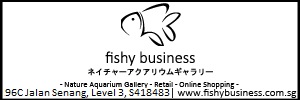Here's a reference to Purigen for the uninformed: http://www.seachem.com/products/prod...s/Purigen.html
According to the text, Purigen's beads darken as they absorb the stuff in the water. So no cause for concern. Faster absorbing power = good right?
I don't recommend removing the filter wool in favour of Purigen. There's always the need for BB.
Buy some pantyhose from NTUC and use that as your filter bag. It's about as fine as it can get.
For plant ID... pictures please!









 ?my tank water still yellowish though from the dw.
?my tank water still yellowish though from the dw.

 Reply With Quote
Reply With Quote

 regarding the plant, i think its duckweed after searching the internet for pics, but nvm i wont be getting it.
regarding the plant, i think its duckweed after searching the internet for pics, but nvm i wont be getting it.  its as though its looking for something there, then it slowly crawl down and went to the moss. just something i want to share
its as though its looking for something there, then it slowly crawl down and went to the moss. just something i want to share



Bookmarks